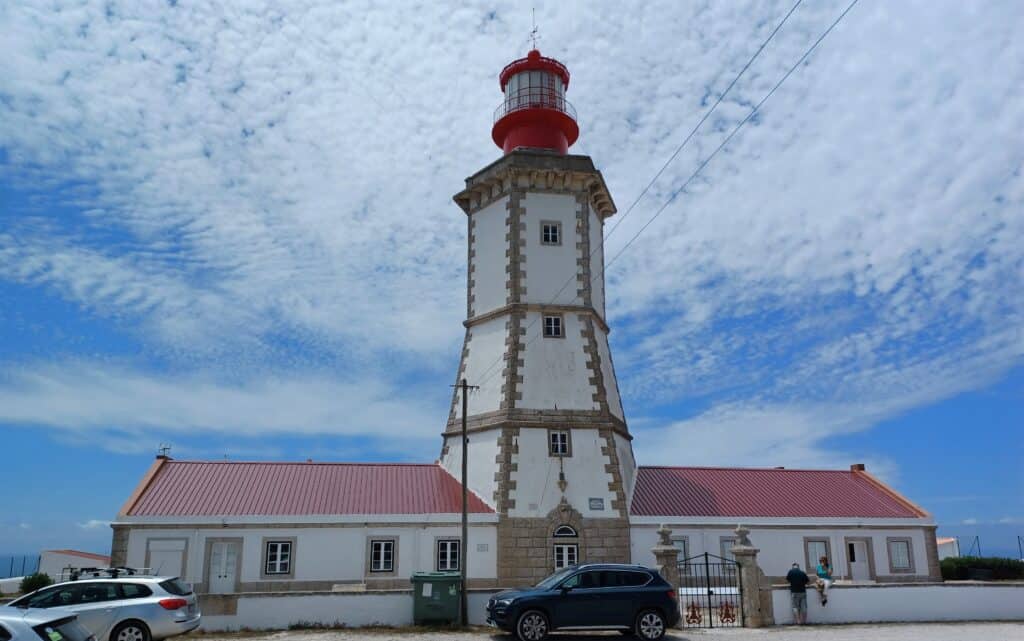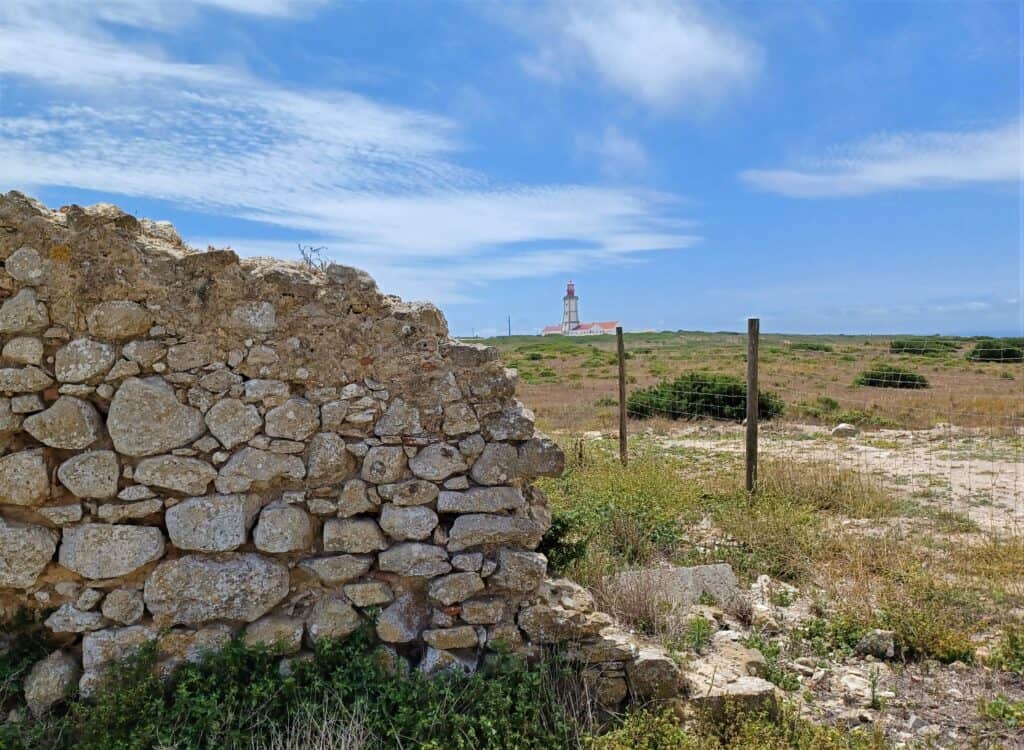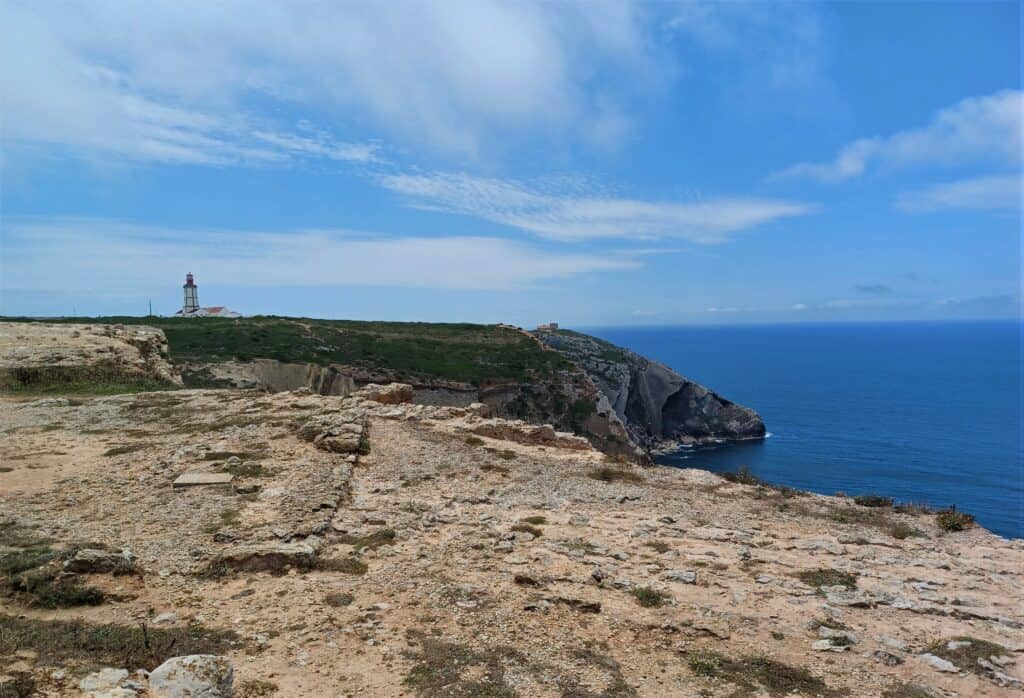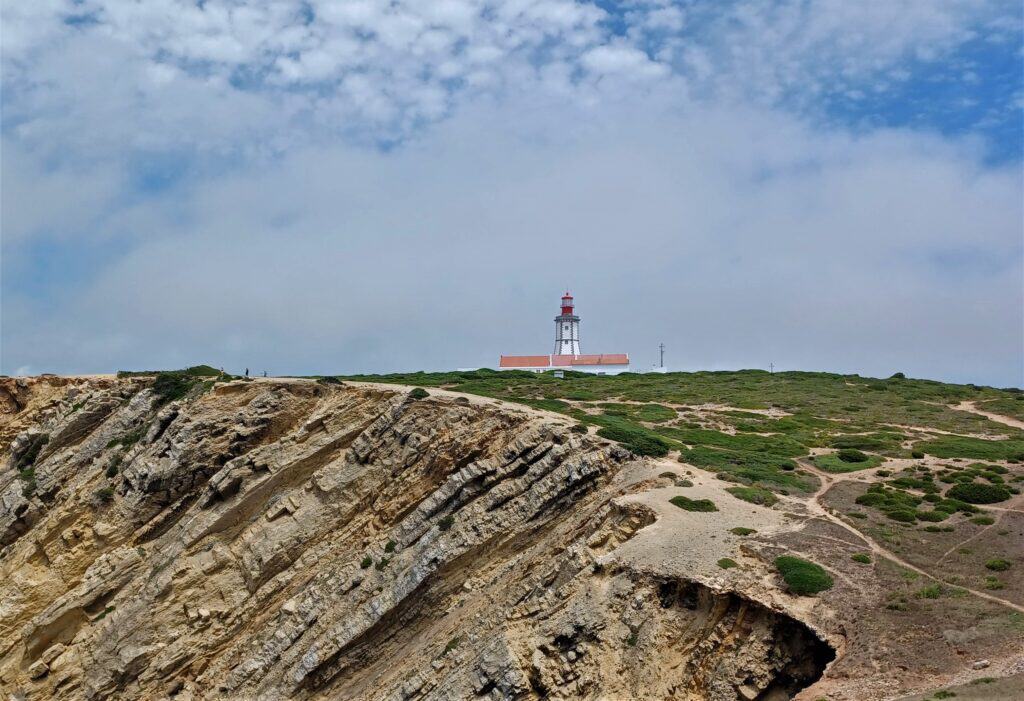A windy point with a legend about a giant donkey is a great day trip from Lisbon
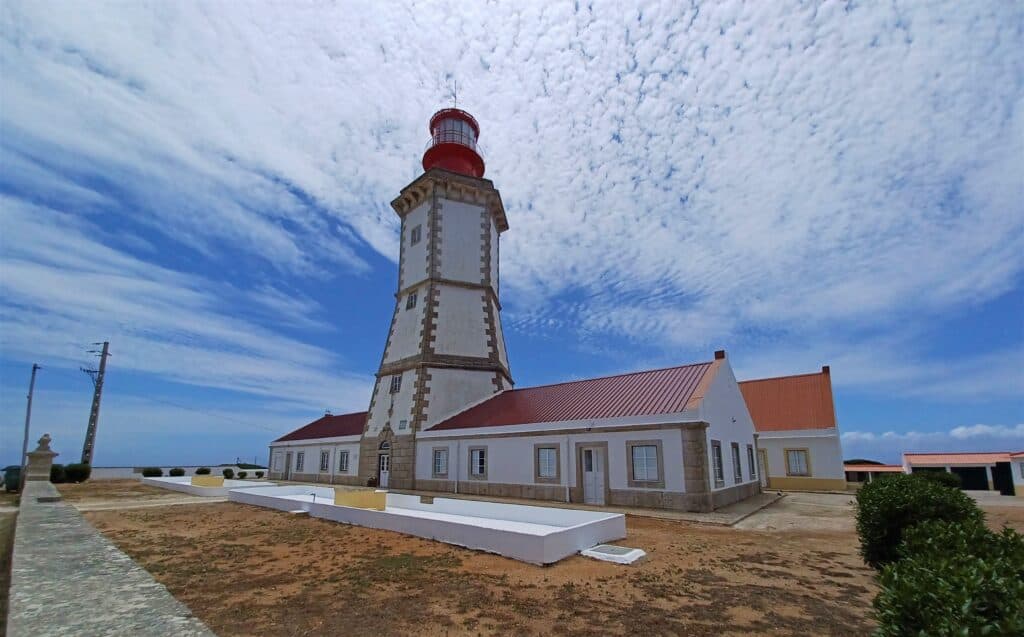
Cabo Espichel origin story
There is evidence of tribes in the area of Cabo Espichel (Cape Spike) about 2,500 years ago. While the Romans were in the area 2,000 years ago, it doesn’t appear that they built a settlement on the cape. Nor did the Moors who occupied the area starting in the 8th century CE. However, there is evidence that both Romans and Moors were aware of the Cape and passed through the area. Maybe they were tourists just like you and me!
The legend of the Lady of the Cape
Construction at the Sanctuary of Our Lady of Cape Espichel (Santuario de Nossa Senhora do Cabo Espichel) began in 1701, but its history dates back well before then.
Memory Chapel
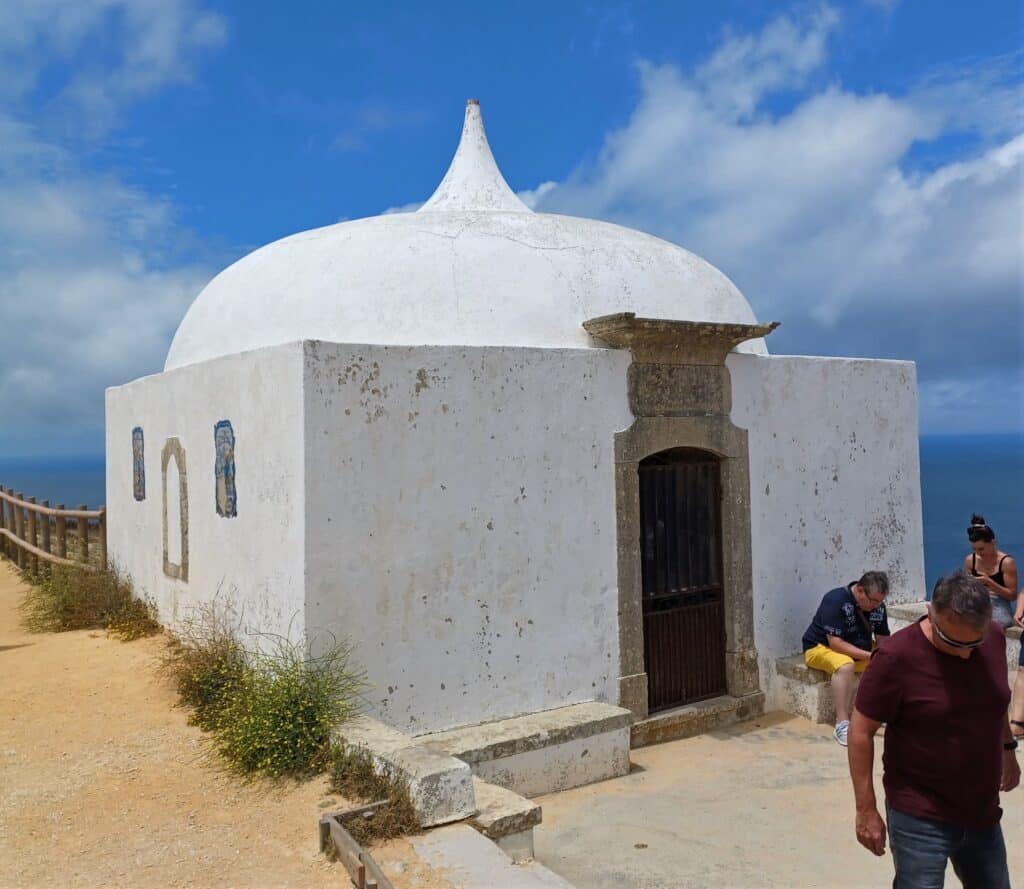
In 1410, two old men from Caparica and Alcabideche claimed to have seen an image of the Virgin Mary riding a giant donkey up the steep cliffs of Cabo Espichel. As a result, a hermitage was built on the site. That hermitage, known as the Memory Chapel, is still standing, although the current structure probably dates to the 17th or 18th century.
The Memory Chapel is locked but you can peer inside and see the azulejo murals that depict the story of Mary and the donkey. There’s also a place to sit and enjoy the spectacular views of the ocean.

After the old men’s story of Mary gained traction and spread, pilgrims started arriving at Cabo Espichel, so the church and Casa dos Círios was built.
Santuario de Nossa Senhora do Cabo Espichel
While the church itself isn’t notable in scope or design, you have to wonder how they got the materials to such a remote place. Did they haul the stones up the cliff or did they transport them from further inland? Either way, it must have been an arduous task.
Casa dos Círios
After the church was built, long arcades called the Casa dos Círios were built on either side of the church. These housed pilgrims who visited the site and served as a marketplace of sorts.
If you watch the TV show “The Amazing Race,” you might recognize this spot from Season 33 (Episode 9).
While the buildings are currently abandoned and bricked up, there is talk of renovating the Casa dos Cirios into a hotel. With new visitors staying here, it would bring this spot full circle. But, they do occasionally hold festivals here.
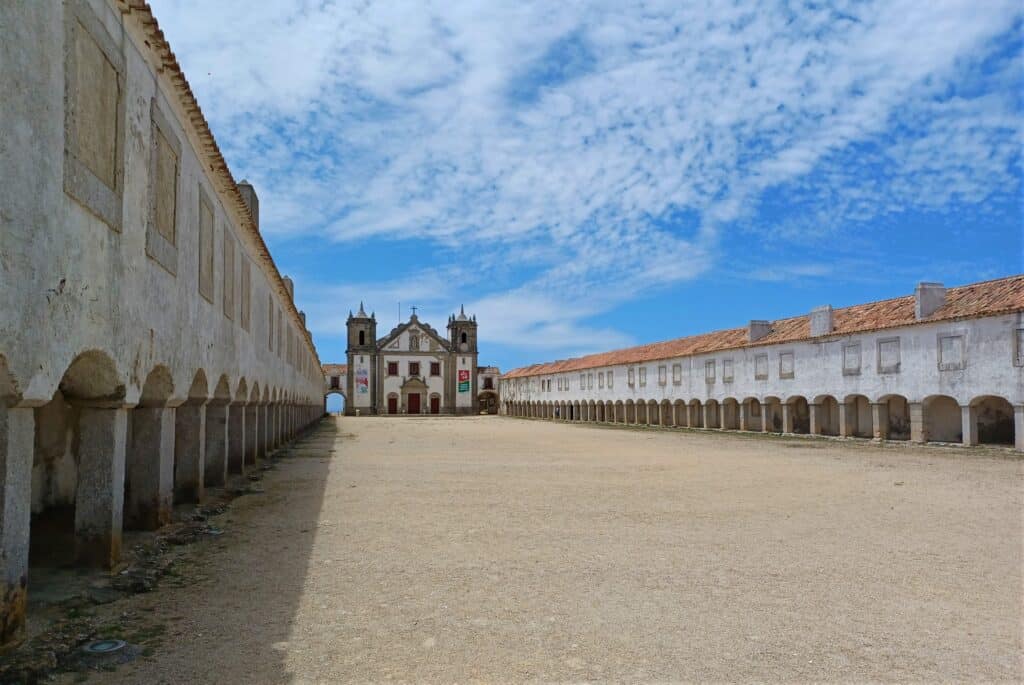
Next to the Casa dos Círios is the ruins of an 18th century opera house. Apparently, many famous singers of the time performed here.
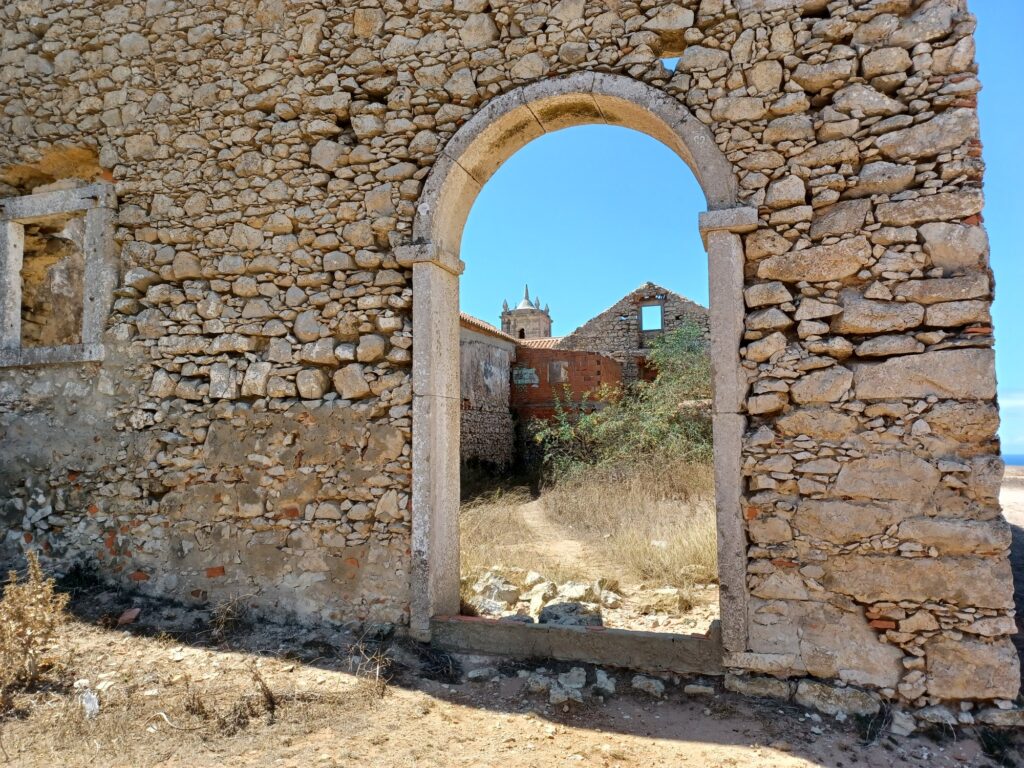
Farol do Cabo Espichel (Cabo Espichel Lighthouse)
Shortly after the original hermitage was built in the 15th century, monks began lighting fires to assist ships navigating the treacherous waters near the cape.
It took over 350 years for a permanent lighthouse to be built when, in 1790, the Farol do Cabo Espichel was erected. The structure housing the light is only 100 tall, but because of the huge cliffs at Cabo Espichel, the light is actually hundreds of feet above the ocean and the beacon can be seen for many miles.
The building is usually closed to the public, but allows visitors on Wednesday afternoons.
Nearby are a couple of abandoned concrete buildings. They’re falling apart and covered in graffiti, but are interesting because they contain some long-forgotten machinery including a large turbine.
Dinosaur Tracks
Turns out, the giant donkey prints the old men thought they saw in the cliffs of Cabo Espichel were actually dinosaur tracks from 150 to 200 million years ago.
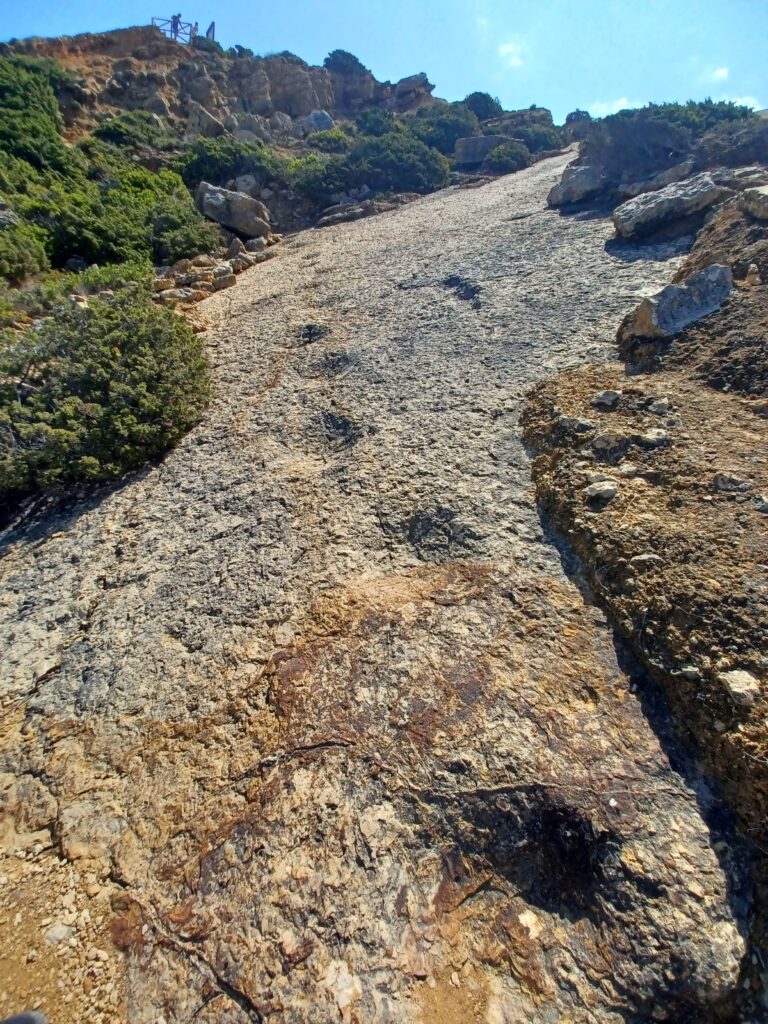
Unfortunately, you can’t see the tracks from the Memory Chapel or the walk along the cliffs
However, from Monumento Natural dos Lagosteiros you can see the imprints. There is a parking area shortly before you arrive at Cabo Espichel and recently installed signs and a wooden lookout platform make the artifacts easier to spot than before.
It is not advisable to go beyond the fenced off area, especially during rainy weather. The cliffs are steep and unforgiving.
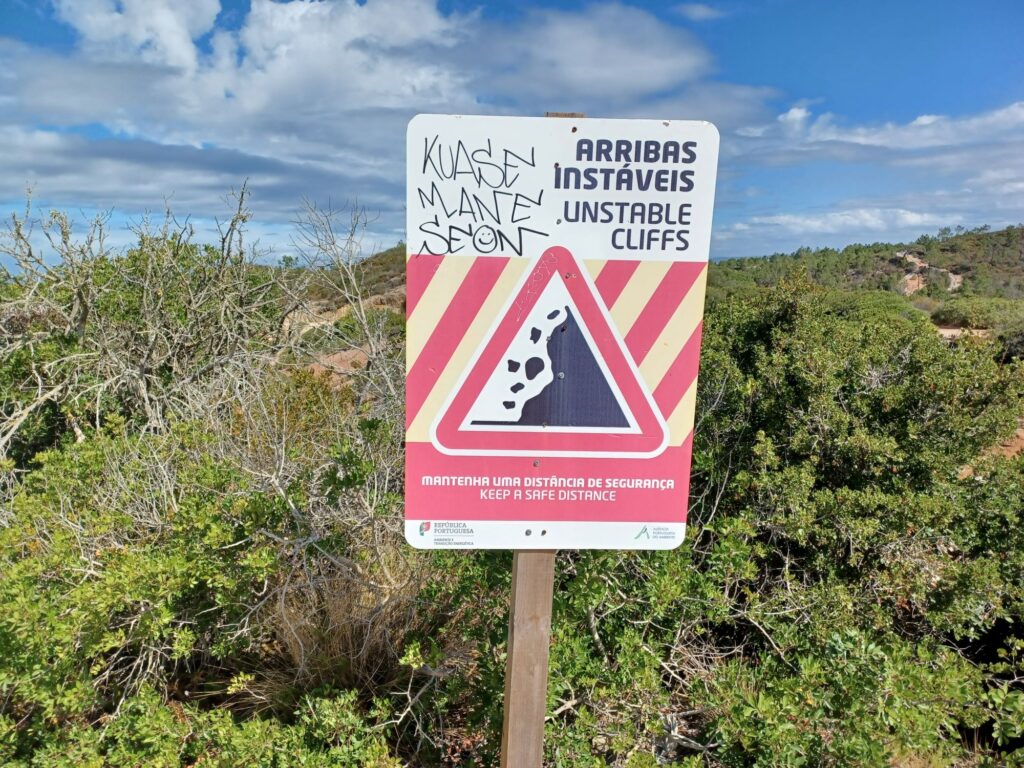
That said, we visited with a professor of geology who knew what he was doing. He took us to see the tracks close up. We learned that back in Jurassic era, this part of the Iberian Peninsula was a flat area with shallow marine waters, and ideal environment for dinosaurs to live and feed.
Over time, as the continental plates shifted and bumped up against each other, the cliffs at Cabo Espichel were formed. That’s why the dinosaur tracks we see today are on steep cliff faces, and not because the ancient beasts we scaling stone walls at 70 degrees!
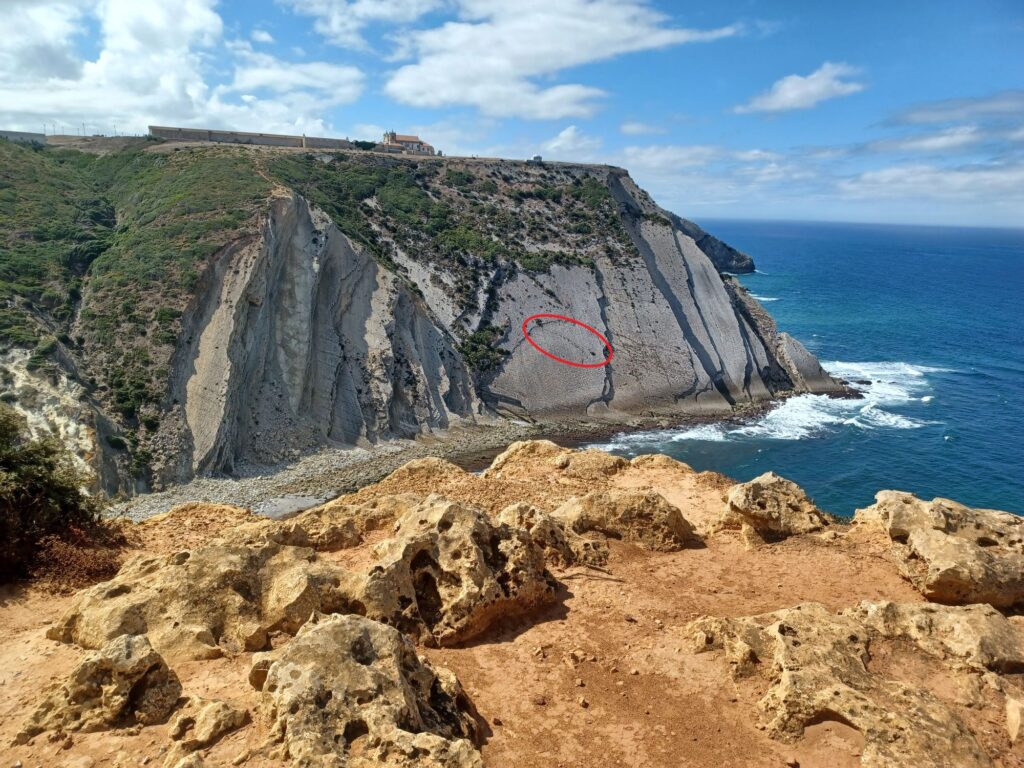
In addition to the dino tracks, there’s also lots and lots of fossils in the rocks. Snails and other sea creatures have been preserved in the limestone. They’re easy to spot if you take the time to look and many of them are in easier to access spots than the footprints of the giant land roamers.
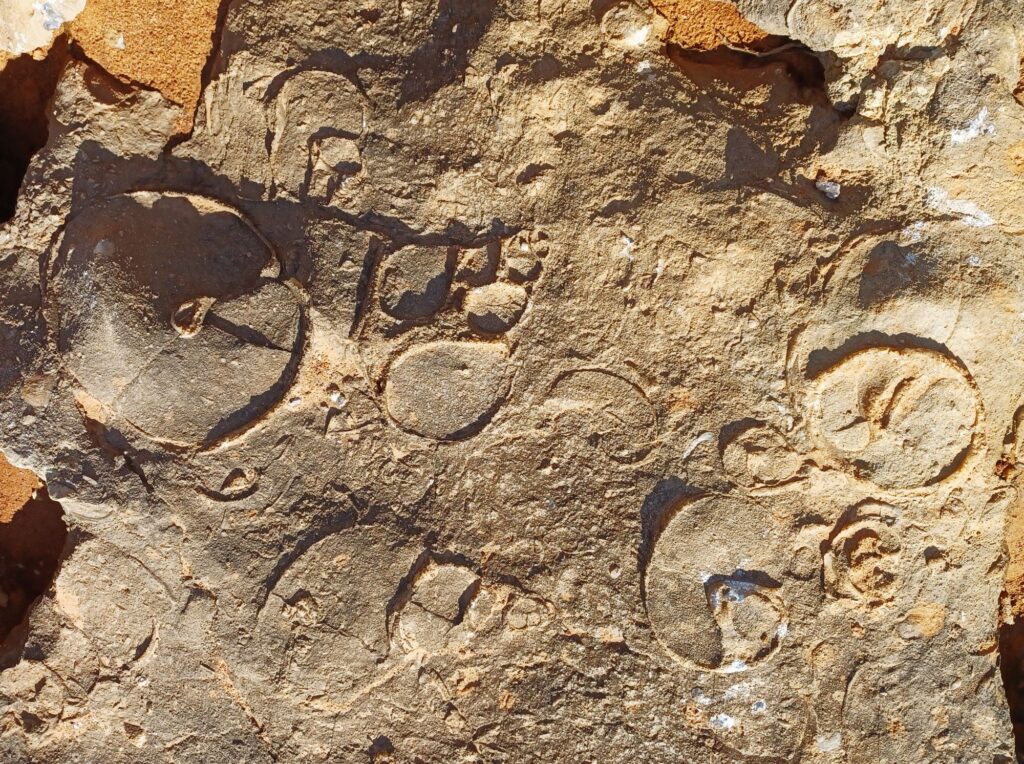
Visiting Cabo Espichel
Cable Espichel is an extraordinary place. You can spend hours exploring the windswept cliffs and hiking the trails. Every step seems to bring a new site into focus. Be sure to exercise caution, however. The cliffs are steep and the footing can easily give way. Stay away from the edge of the cliffs. Especially since much of the area has no guard rails or safety barriers.
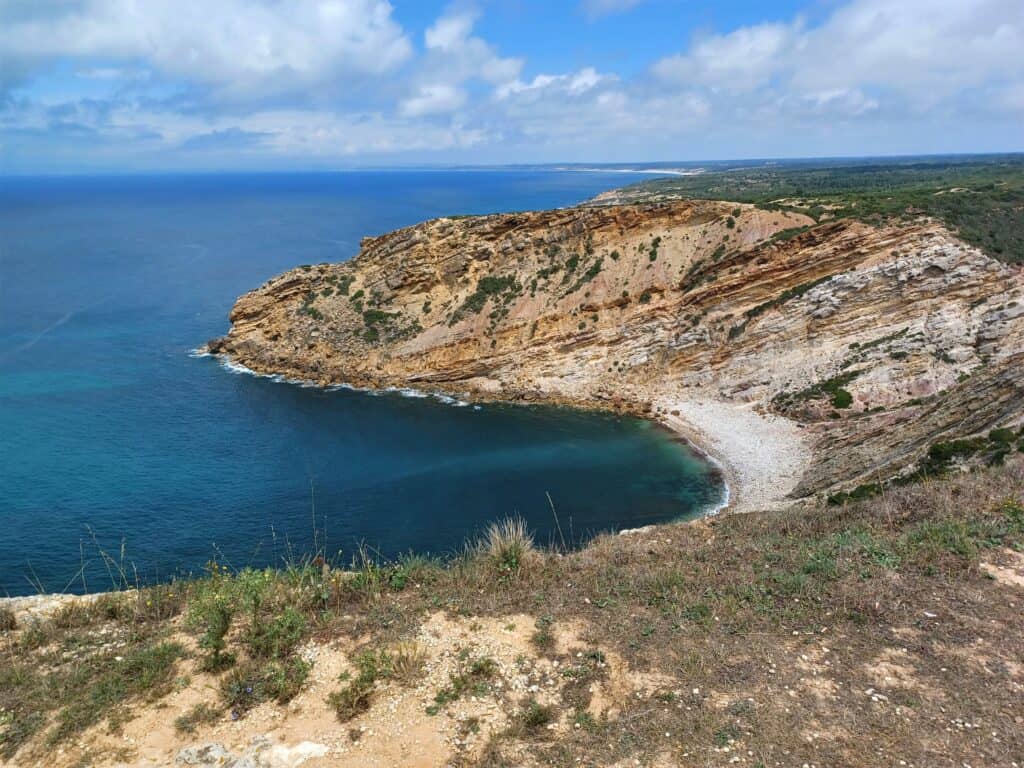
Cabo Espichel is remote and rather difficult to get to with public transportation. So, it is advisable to drive. The trip from Lisbon will take about an hour, more or less.
If you want to travel by public transport, take the bus from Sete Rios to Sesimbra. At Sesimbra, transfer to the bus to Cabo Espichel. Assuming your transfer lines up, it’ll take about 2 hours.
However, note that buses to Cabo Espichel are infrequent. Be sure to check when the return bus is scheduled and don’t bet on taking the last one just in case it is canceled or you miss it.

About the Author

Brent Petersen is the Editor-in-Chief of Destination Eat Drink. He currently resides in Setubal, Portugal. Brent has written the novel “Truffle Hunt” (Eckhartz Press) and the short story collection “That Bird.” He’s also written dozens of foodie travel guides to cities around the world on Destination Eat Drink, including in-depth eating and drinking guides to Portugal including Lisbon, Porto, Sintra, Monsaraz, and Batalha. Brent’s podcast, also called Destination Eat Drink, is available on all major podcasting platforms and is distributed by the Radio Misfits Podcast Network.

